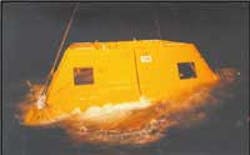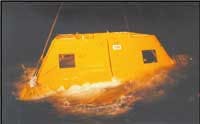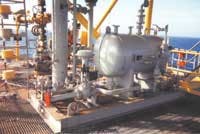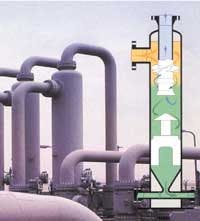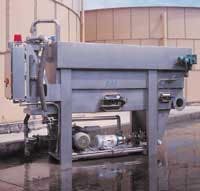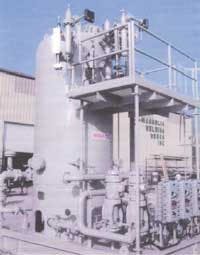Issues to address in the selection of production separation methods/equipment
By Thomas F. Cross
David Arnold
Paragon Engineering Services, Inc.
A number of changes have influenced the separation equipment industry since the separation poster, "Worldwide Survey of Separation Technology for the New Millennium" (Offshore, December 1999) was released. Many unrelated equipment manufacturers have merged, various product lines have expanded, others have been discontinued, and valuable research has shed promising light on the relatively new world of subsea separation equipment. Of course, these changes are symptomatic of the energy industry as a whole.
The combination of mergers, downsizing, and rapid developments in facilities technology have resulted in a gap between the vast amount of old and new technologies available, and the dwindling number of engineers with the experience and expertise required to impartially determine which technologies - old or new - should be applied in any given application.
This article attempts to bridge the technology/expertise gap by addressing the learning-curve needs of new engineers being brought into the energy industry. The goal is to assist readers in thinking about critical questions that must be addressed in the selection of equipment.
Questions to address
Several questions must be asked in order to scope the separation task at hand. Foremost in the designer's mind has to be a clear definition of the fluid stream to be handled. All of this information might not be available when the separation problem first presents itself, but the following critical questions with following explanations, based on those listed on the poster, will help to sort out the path forward:
(1) What are the operating flow rates, and can we define stabilized flow rate versus extreme rates of flow, either maximum peak flow rate or minimum flow rate?
This question can spark endless debate and speculation. New subsea wells surely will have well tests to confirm the flow rate outlook. Similarly, pipeline operators know the daily flow rates on their pipelines, and platform operators know whose well is on at any point in time. Still, it is better to think in terms of ranges of flows, since most separation equipment will be required to handle a variety of different flow rates. Often, this range is identified by a "turndown ratio," referring to the ratio between the highest flow rate the equipment can handle, divided by the lowest rate it can handle. For example, equipment manufacturers might say that a particular piece of equipment has a maximum flow rate of 100 MMcf/d, with a turndown ratio of 8. That means that the equipment can be operated successfully with a flow rate as low as 12.5 MMcf/d.
(2) Are the fluid properties known (density, compressibility, etc.)?
It is very important to be able to predict fluid behavior and fluid interaction with the separator. Often, these properties are unknown to the designer because equipment selection, at least from an initial costing standpoint, may be based on a similar field development, not the actual field under study. The best knowledge available should be used, and the designer should note the sources of the fluid property information in the project file.
(3) How will the separation system fit into the overall process design?
This matter receives a lot of attention from equipment designers and process flowsheet engineers. For instance, separators don't dehydrate, and dehydrators aren't designed to perform inlet separation. How much additional liquid handling is needed to augment the separator? The engineer must think about what the expectations are from each piece of equipment in the process design and then balance the process loads. Many software applications aid in this task. Examples include Paragon Engineering Services, Inc.'s proprietary in-house Facilities Design Program and poster contributor Zeta Stewart Associates' sizing software. In all cases, the engineer must understand the separation requirements and be able to interpret the software program's output. Another tip: process designs use a variety of equipment from different suppliers. Make sure the answers that come from the software make sense from the perspective of achieving real-world solutions with available equipment configurations.
(4) Can we characterize the separation needed?
The earlier in the design process this question is answered, the better. Is two-phase (gas-liquid or liquid-liquid) or three-phase (gas-liquid-water) required? The answer has an impact not only on the selection of the separation equipment, but also on all other equipment that is included in the process (noted in question 4).
(5) Which of the many available separation options is most appropriate and reliable for the specific application?
Economics, physical space limitations, fluid properties, and operating conditions can all influence the ultimate selection of equipment. Sounds like a chicken-egg question? The point here is that all of these things must be thought out independently. For instance, if we expect a lot of upstream production imbalances, we might also expect frequent slugging of the separation equipment. Some available equipment types are more capable than others to handle such conditions.
Other factors
What other factors are going to influence the separation system? Any number of other factors can influence the choice of separation systems. The engineer should make a list and then try to predict potential concerns over the facility's required operating life, and these include environmental considerations:
- How will separated streams be handled?
- Are there waste products to be disposed of?
- Is there sufficient physical room to install the required separation equipment?
- Do we expect sand or solids in the flowstream? How about other impurities?
- Do we expect liquid slugging or surging?
- Are foaming and corrosive tendencies likely to occur?
- What of these elements or others are likely to impact flow assurance?
The engineer needs to think about and characterize the separation problem as much as possible before equipment selection begins. These basic questions are based on the concepts presented in the second editions of Surface Production Operations, Volume 1: Design of Oil-Handling Systems and Facilities and Volume 2: Design of Gas-Handling Systems and Facilities by Kenneth E. Arnold and Maurice Stewart (Gulf Publishing Company, 1999).
Many different companies now offer a large variety of equipment, highlighting the need to be as precise as possible when scoping a separation problem and the potential solutions.
Subsea applications
ABB Offshore Systems Inc., for example, is a supplier in one of the newest and fastest-growing segments of the separation equipment field. The first figure shows ABB's SUBSIS subsea separation and injection system. With a liquid production capacity of 63,000 b/d, a closed-loop process control system, and inlet cyclone/ horizontal separation, this unit separates bulk water and then re-injects the water into a disposal reservoir.
SUBSIS works in much the same way as an offshore platform's free-water knockout system, but it is specifically configured for subsea applications. This unit was installed for testing and full-scale trials on the Norsk Hydro Troll C Field in the North Sea.
Engineers who are relatively new to the industry should review the key scoping questions and additional questions for subsea-based separation equipment.
Platform applications
Kvaerner Process Systems, for example, has a skid-mounted separation system for platform use. The compact design and easy access to skid components make this separator system easy to monitor and repair or replace components, if needed.
Often, skid-mounted separation is combined with multiphase metering, as is the case of Agar's separation/multiphase metering system. This illustrates the value of compact and open design for offshore platform applications.
Land-based applications
Land-based separator application options are as varied as those for subsea and offshore platforms. CDS's Gasunie Cyclone Separator system, for example, is a relatively typical in-line separator application. The cyclonic mechanism integrated into this design is highlighted in the poster. The inlet stream takes a tortuous path so that liquids being carried along with the gas stream are scrubbed out. Gas exits the top of the unit. An accompanying figure shows the Gasunie Cyclonic Separator installed in the field, along with the fluid path.
Another land-based application is the same Agar modularized skid we saw in offshore applications. The unit is trailer-mounted so numerous well locations can be flow tested and metered with the same pre-fabricated, skidded assembly.
We encourage the industry's relative newcomers to ask the various separator manufacturers how they address the critical design questions. For these land-based separation systems, paramount is the matter of disposing of waste products. How environmentally friendly are the separation system and the processing system as a whole?
Creative solutions
Equipment manufacturers offer a variety of unique and creative solutions to just about any separation problem that can possibly enter an engineer's head. For instance, Clean Water Technology's Bubble Accelerated Flotation System (BAF) (see figure) for water treating can be used for tasks such as contaminant removal, product recovery, water recycling operations, and aeration. Meanwhile, Mega-Cell, Inc. supplies separation skimmers for large production streams (see figure).
Hanover is another long-standing supplier of land-based pipeline separators. Its C3480-03-01 combined hydrocyclone/flotation Produced Water System employs similar technology.
Conclusion
There is almost as much diversity in the types of solution as there is in the questions that can be asked of specific separation challenges. It is extremely important to be able to ask the appropriate questions so that the separation problem at hand can be characterized and solved quickly and cost-effectively. What is needed and why? How sure are we of the input to the problem? Our ability to answer this question determines whether we can achieve reliable and efficient output solutions.
A former colleague of this article's lead author used to say, "The answer is usually as clear as the question." Re-stated, the would mean, "The better the question, the better the answer."
Authors
Thomas F. Cross has 27 years of experience in engineering, project management, engineering design, and personnel development related to a wide variety of oil and gas pipeline and facilities efforts. Before joining Paragon as Manager - Marine Pipelines, Tom directed engineering and construction for Williams Energy Services' Gulf Coast Area operations.
David Arnold coordinates media relations and proposal efforts for Paragon Engineering Services, Inc. He has over 10 years experience in writing and editing oil-and-gas-related technical documents, proposals, newsletters, marketing literature, journal articles, and press releases as well as general-interest reviews and news stories for a variety of publications.
